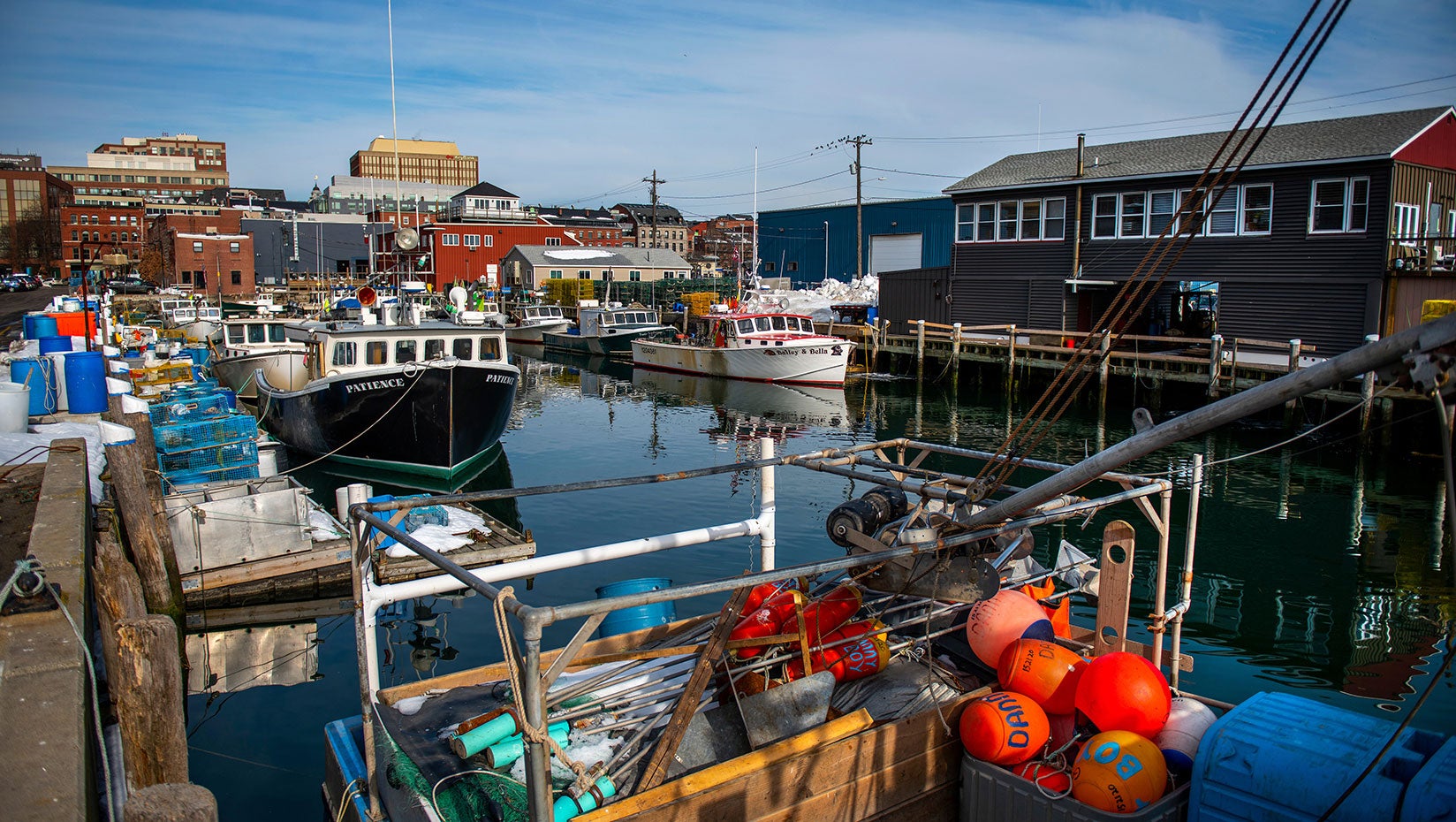
A drop-off last year in seafood exports and the domestic wholesale market resulted in a pivot that increased direct marketing, retail and e-commerce sales.
Now a new survey is looking to help the commercial fishing industry continue the direct-marketing trend, as an important socio-economic hedge to protect against future shocks to the system and ensure food security.
A partnership between the University of Maine and federal agencies aims to help the commercial fishing industry understand local and regional seafood marketing practices, and help remove barriers to direct marketing.
UMaine initiated the partnership with the U.S. Department of Agriculture and the National Marine Fisheries Service.
The service is a department of the National Oceanic and Atmospheric Administration.
Over the next year, the partners will develop a national benchmark survey of direct seafood marketing practices in domestic wild-caught fisheries in an effort to strengthen food systems and coastal community resilience.
“Currently, there is a gap in national-level data on the domestic seafood system,” Joshua Stoll, one of the principal investigators for the project and a UMaine assistant professor of marine policy.
Stoll also leads the Local Catch Network, which is headquartered at the UMaine School of Marine Sciences. The network is a community of fishermen, researchers and consumers committed to providing local, healthful, low-impact and economically sustainable seafood directly from harvesters.
The network was founded in 2011 and today has more than 200 members, including 12 in Maine. It promotes “boat-to-fork” systems of local and regional seafood distribution, such as community supported fisheries. It received funding late last year to catalyze direct-to-consumer seafood operations.
The survey will be shaped by the network’s harvesters and by broader industry participants.
Also contributing to the survey will be data from the federal agencies. That includes USDA’s direct marketer data on farms and ranches and the service’s extensive fisheries data.
To support the project, the service’s Office of Sustainable Fisheries awarded the University of Maine a $142,824 grant via the Cooperative Institute for the North Atlantic. The U.S. Department of Agriculture is contributing an additional $24,222.
Marketing strategies
The collaboration is expected to give researchers, policy makers and the fishing industry insight into the marketing strategies of fishing businesses, given the ever-changing nature of fishing regulations and new stressors due to climate change and the pandemic. The goal is to support the flexibility and resilience in the fishing sector necessary to continue providing nutritious and sustainably harvested seafood to the nation.
“Domestic seafood markets are critically important to coastal community resilience, food security and jobs, and, thus, sustainable fisheries,” said Patricia Pinto da Silva, one of the service’s co-leads on the project and a social scientist at the service’s Northeast Fisheries Science Center in Woods Hole, Mass.
Knowing more about alternative market strategies is critical to understanding how to add value to industry products and remain viable, said Dale Squires, another service co-lead and senior economist at the service’s Southwest Fisheries Science Center in La Jolla, Calif.
Traditional exports down
Seafood is a vital part of the nation’s food system. But, said Stoll, surprisingly little is known about what happens to fish, shellfish and other marine organisms that are destined for people’s plates once they are landed and enter the marketplace.
Collecting data is expected to help inform fishermen, researchers and policy-makers about the state of direct marketing efforts, and the characteristics of consumers and marketers. It’s also expected the data will be useful for future investments, directing targeted technical support and identifying impacts of new regulations or climate change on this sector.
The survey comes at a time when many traditional export markets have been hurt in the pandemic, highlighting the importance of direct marketing for seafood as a matter of socio-economic security to protect against future shocks to the system and ensure food security.
To raise revenue and remain economically viable, many wild-catch fishing businesses have pivoted to marketing their catch in high-value, niche markets, which also are not yet well understood.
In FY 2020, the USDA contributed $27 million in funding to small and mid-sized farming operations engaged in local and direct marketing, through its Farmers Market Promotion Program and the Local Food Promotion Program.
The seafood survey could help federal, state and local agencies direct more resources to the fisheries.
“We’ve seen that baseline data is critical to strengthening local and regional food systems because it helps to make them more visible,” said Edward Ragland of the Agricultural Marketing Services.
The first phase of the project focuses on working across NOAA’s fisheries regions to build a list of seafood businesses involved in local and direct seafood sales, and design the survey methodology. The success of the effort, being piloted as a national model, will depend on collaboration with, outreach to and input from commercial wild-caught seafood harvesters who distribute their catch through direct markets.
"direct" - Google News
October 26, 2021 at 08:18PM
https://ift.tt/3jF2inL
Seafood purveyors look to boost direct marketing - Mainebiz
"direct" - Google News
https://ift.tt/2zVRL3T
https://ift.tt/2VUOqKG
Direct
Bagikan Berita Ini














0 Response to "Seafood purveyors look to boost direct marketing - Mainebiz"
Post a Comment